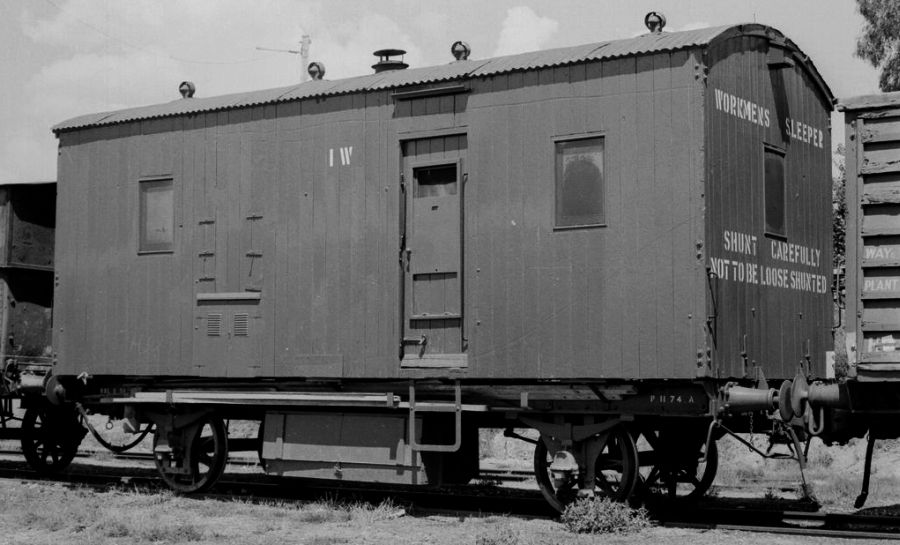

The workmen's sleeper vans represents one of the most fascinating groups of rolling stock. They represent the 'end of the line' for downgraded surplus carriages, mixed with vehicles built new from the 1900's. Some vehicles in this class were originally 1st class passenger carriages in the 18890s and were gradually downgraded over 30 to 40 years to Works sleepers.
An overview of the vehicle histories shows two events that produced surplus stock. The first event was the introduction of bogie carriages en-masse 1887-1893 which basically removed fixed wheel passenger vehicles from main line country running. These surplus vehicle were either scrapped or placed into works sleeper service. Most of this rolling stock dated back to the 1860's and were gradually scrapped from the 1900's through to the 1930's. Other fixed wheel stock that survived still saw traffic on trains, though on branchlines, limited use or as part of the Melbourne steam suburban train fleet. The second event that effectively 'cleaned out' fixed wheel stock was the introduction of electrification. Bogie vehicles were converted to electric service and the introduction of more bogie carriages removed fixed wheel stock from passenger trains by 1926. From these cars came conversions to the workmen's fleet which subsequently lasted up to the late 1970's. The majority of this stock was built 1883 to 1886.
The workmen's sleeper fleet in the 1880's was originally an ad-hoc group of cars. By about 1888 the cars were placed into a vehicle group coded _WS_.
In the 1910 recoding, the WS class was altered to W with new numbers allotted.
In 1901 a new van design was constructed leading to all new vans from this date being built to this design with slight modifications. This van became W 1.
There was van construction in 1911, 1914, 1928/29, 1934, 1936/37, 1943, 1945, 1958 to 1960. In between some of these years, surplus fixed wheel cars were converted to W.
There were many types of service for the W vans. They were used by painters, bridge gangs, track gangs, weighbridge repairers; all moving from station to station within the districts of the Victorian rail network. Large camp areas were situated at major points within each district. These camp sites were usually occupied as the 'mobile gangs' moved through the district on rerailing or resleepering projects. Special trains would move the cars en-masse to the next camp site.
Individual vans housing painters or bridge repairers would move to a station siding and set up base for a period of weeks to months.
Some men lived in these vans for most of their railway life, 15 to 20 years or more.